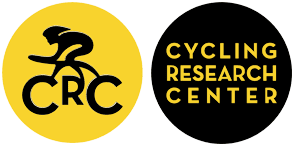Torque behaviour during cycling sprints from different pedalling frequencies
Keywords:
Cycling, Torque, Torque-Velocity-Relationship, Cycling SprintsAbstract
Professional road cycling events often result in a bunch sprint at the end of a race, where power outputs of >1.200 W have been recorded. To hit those power outputs high torque and cadence is needed. The purpose of this study was to investigate torque and cadence relationship in cycling sprints in field condition. Five athletes (mean±SD; female: N=3, 23±2 years, 172±cm, 59±3 kg, male: N=2, 27±3.5 years, 179±9 cm, 79±6 kg) executed five maximum sprints over 6-10 s starting from different cadences. Using the latest generation of crank based cycling power meters (SRM Powermeter 9, Jülich, Germany) and data of torque, power, angular velocity, and angle were recorded every 5 ms. Maximum Torque demonstrated a large effect (d=1.4 to 4.0) across all cadence ranges (∆: 25 to 72 Nm). However, maximum on power demonstrated a small to large effect (d=.3 to 1.1). Sex differences demonstrated a large effect for peak Torque, maximum on power, and maximum one second power, (d=2.3 to 3.2) and small effects for Angleft and Angright (d=.2 to .3). The findings suggest a deeper analysis and understanding of cycling sprints in field. Furthermore, cycling sprints are very different comparing sexes.
Downloads
Published
How to Cite
Issue
Section
Copyright (c) 2022 Journal of Science and Cycling

This work is licensed under a Creative Commons Attribution-NonCommercial-NoDerivatives 4.0 International License.
Authors contributing to Journal of Science and Cycling agree to publish their articles under a Creative Commons CC BY-NC-ND license, allowing third parties to copy and redistribute the material in any medium or format, and to remix, transform, and build upon the material, for any purpose, even commercially, under the condition that appropriate credit is given, that a link to the license is provided, and that you indicate if changes were made. You may do so in any reasonable manner, but not in any way that suggests the licensor endorses you or your use.
Authors retain copyright of their work, with first publication rights granted to Cycling Research Center.






